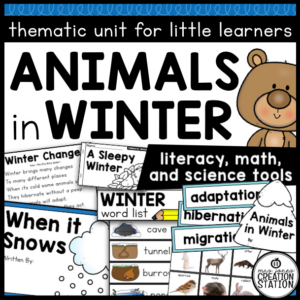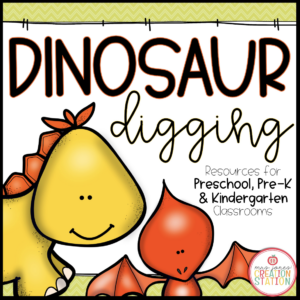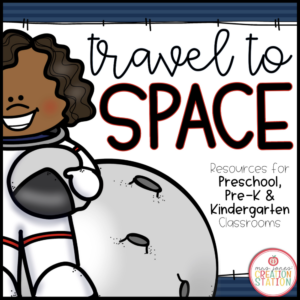Menu
In this pack, whole group, small groups and independent resources are used for a thematic lesson about Valentine’s Day. Lesson plans with mini-lessons, center activities, and an interactive page are available for each week of instruction.
Buy the BUNDLE and SAVE! You can purchase this resources in the Thematic Activities for Little Learners Bundle and the Little Learners Mega-Bundle!
THIS RESOURCE INCLUDES
Week 22 Plans
This is a template for lesson plans during the week of Valentine’s Day at school. Pick and choose what ideas and resources work for your learners.
Valentine’s Day – Whole Group
These resources can be used during whole group instruction for a Valentine theme. They include a poem, word cards, tracing page and table sign in sheets.
Valentine’s Day Interactive Poem
Use this poem during a thematic lesson, whole group or a literacy center and have learners choose Valentines gifts they can give their friends and family.
Kindness Thematic Plans
Use these plans as a guide for an engaging Valentine or kindness read aloud and activities in the classroom.
Be Kind to Everyone
Read Try a Little Kindness and complete the kindness chart together. Learners may then create their own act of kindness using the Kindness Grid printable.
Be Kind to Ourselves
Read I Love Myself Today and have learners pair and share something they love about themselves. Learners may make a book to understand that they must love themselves before they can love others.
Be Kind to Our Family
Read Oh, the Things My Mom Will Do and list ways families show love to each other. Leaners may draw or write how they love their family and their family loves them.
Be Kind to Our Friends
Read Be Kind and create a chart together of ways they can show kindness to their friends. Learners may create a flip book.
Be Kind to Others
Read Miles of Smiles and have learners create a Smile Bag they can fill with Smile Cards to give to others.
Valentine’s Day Sensory Charts
Explore Valentine’s Day with the five senses. Complete the charts together and have learners draw and write about the holiday using their senses on the interactive page.
Kindness Predictable Chart Class Book
Use this resource to create a class book from the predictable chart created during the week.
Literacy Center | Alphabet Pocket Chart
Have learners match the letters on a pocket chart.
Literacy Center | Short Vowel
Have learners sort the picture cards by their vowel sound.
Literacy Center | Sight Word Write the Room
Have learners find and write the sight words they find around the room.
Math Center | Counting Clip Cards
Have learners clip the correct number for each picture on the clip cards.
Math Center | Missing Number
Have learners find the missing number and place it in the correct set.
Math Center | Positional Words
Have learners place the correct picture on the card based on their positional word..
WEBSITE | FACEBOOK | INSTAGRAM | PINTEREST | TEACHERS PAY TEACHERS
© Mrs. Jones’ Creation Station, Inc
How can I see what is new in the MJCS store?
Be the first to know about new discounts, freebies, and new products. You can also subscribe to our newsletter to receive access to resources only available to MJCS subscribers, as well as, special offers and ideas!
How can I get credit for my TpT purchases?
Go to your account button at the top of the page. Under the “Buy” section, click “My Purchases “. Beside each purchase you’ll see a Provide Feedback button. Simply click the button and you will be taken to a page where you can give a quick rating and leave a comment for the product. Each time you give feedback, TpT gives you feedback credits that you use to lower the cost of your future purchases. Please leave detailed feedback for each resource, so we are able to create better resources for teachers and students.
How can I find a certain activity in a large PDF file?
If the resource you purchase has a variety of activities compiled into one PDF find the table of contents and click on the activity title. This should take you to that specific activity in the resource.
What can I do if I have a question about a resource?
If you have any questions regarded a resource before purchasing please email me at mrsjonescreationstation[at]gmail.com. Once you have purchased the resource you may use the “Product Q and A” tab on the product page to ask a question, as well.
How do I know if a resource has been updated?
Go to your account button at the top of the page. Under the “Buy” section, click “My Purchases “. Choose to “sort by: recently updated” to see what resources have been updated since you downloaded them last. You can download any updates from there. If a file has been updated, you will see a notification under the resource that says “Newly Updated – Download for Free!”
This item is a paid product created by Mrs. Jones’ Creation Station, Inc. Copying any part of this product, redistributing, selling or placing it on the internet in any form is strictly forbidden and is a violation of the Digital Millennium Copyright Act (DMCA). Thank you for respecting our work!
YES, YOU CAN…
NO, YOU CAN’T…
Click here for a detailed post with step-by-step directions.
You will need to download fonts specified in the resource and install it on your computer before downloading the editable file.
Install the most recent version of Adobe Reader onto your computer. If you have any problems editing, viewing or printing a file make sure your Adobe Reader is updated.
Now you can download the file to your computer. Once the file has downloaded open in Adobe Reader. You should be able to view the editable fields and the text should match the product description. If you have any problems editing the file, make sure you have followed the directions above and then contact me at mrsjonescreationstation[at]gmail.com




